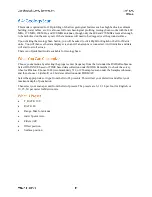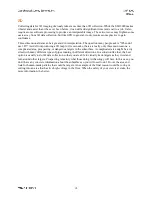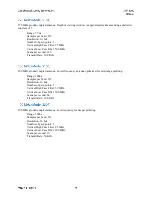
Lower frequency antennas, like the 200 MHz and 400 MHz, will
sometimes not image targets close to the surface very well. While not
strictly a ‘dead zone’ you should be aware that it may be difficult (but
not impossible!) to see targets in this area. As a general rule of thumb,
this zone is equal to the spacing between the transmitter and receiver
dipoles, but this can vary with soil composition. See the chart at right
for a general idea. If your application requires you to see deep and
shallow, consider surveying the area with two different antennas.
Your ability to see a target depends on the contrast between the
dielectric values of the target’s material and the material that the radar energy was traveling through just
before it hit the target. The greater the contrast between the dielectric values, the more visible the target
is. For applications which involve finding metal targets like rebar, pipes, and drums, this is not a great
issue because there will always be a great contrast. The dielectric of metals is so high that the actual
number is meaningless. You will always have a visible contrast where metals are concerned.
Composition can affect your ability to see things in different ways. For example, the contact between a
dry sand (3-6) and a water table (water being 81) will be easy to image, while the contact between
sandstone (6) and limestone (7-8) will be much more difficult. Also remember that it is the electrical
property of the material that most governs dielectric. Even though concrete and grade are qualitatively
very different, they are made of similar materials and react to radar energy similarly. It is usually
extremely difficult to tell the top of grade from the bottom of the slab. You should practice trying to
image different materials so that you can build up a body of experience. See Appendix D for a chart of the
dielectric constants of different materials.
Time is money. Whether you are a university-based researcher working off a grant or performing NDT
work for pay, the faster you can get the survey done the better off you will be. Those charging by the hour
understand the fine balance between a price that reflects a realistic estimate of how long it will take to get
the job done, and padding the cost with unnecessary work. The point of this discussion is to get you to
think about how much information you really need to make a decision.
Two-dimensional data collection means that you will be collecting and interpreting single profiles of data.
This is useful for quickly following a pipe by scanning over an area, noting the location of the pipe
hyperbola on the ground, then moving some distance away and scanning again for the pipe. The real
benefit of 2D data collection is speed and ease of use. Processing is certainly possible on 2D data to clean
up the image, but most clients will only use it for visually noting the presence/absence of targets in the
field. 2D data collection is also useful for geologic applications such as bedrock and water table mapping.
2.6 GHz
0.5 (1)
1.6 GHz
1 (2.5)
900 MHz
4 (10)
400 MHz
6 (15.25)
200 MHz
12 (30.5)
















































